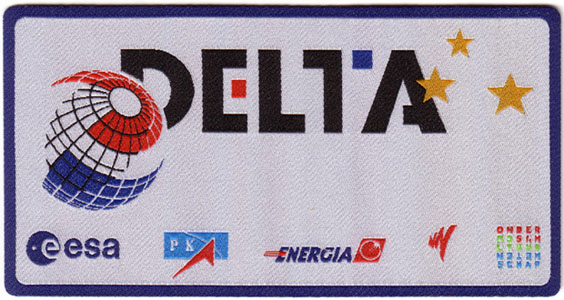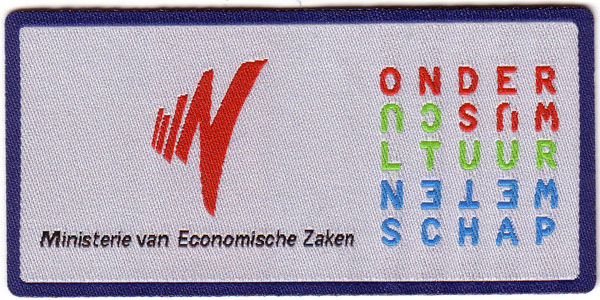|
|
| Crew & Mission |
Left: The Soyuz TMA-4 official crew photo, taken in the second week of March 2004, note the TMA-4 patch on their suits. Right: The TMA-4 crew in the ISS trainer at Star City.
The Soyuz TMA-4 mission is named DELTA. It has a number of goals. First of all, the delivery of a new permanent crew to the International Space Station: my Russian Soyuz commander, Gennadi Padalka, and the American astronaut Mike Fincke. André Kuipers will return to Earth with the Expedition 8 crew, who by then will have lived on the ISS for six months. In addition, the Soyuz spacecraft, which serves as a lifeboat, will be replaced. The launch took place on April 19 at 05:18 CET.
| Crew History |
Left: The first crew, Bill McArthur, Valery Tokarev and André Kuipers. Right: In second week of January 2004, astronaut Bill McArthur was replaced by Leroy Chiao as Commander of Expedition 9 and Soyuz TMA Flight Engineer 2
From André Kuipers diary:
"I was still in the car, on my way to Star City from Moscow Airport, when my boss called. He told me that my American colleague, Bill McArthur, had been pulled out of the mission and replaced by Leroy Chiao. That was quite a shock. Like Bill, I knew that something was going on, but we had not expected this. Fortunately, it is nothing serious. He is healthy, but for reasons of medical procedure he has to remain grounded for six months. I called him and asked how he was. He is taking it fairly well, partly because it simply means waiting for another flight.
In February I was once again unexpectedly confronted with a change to the crew. The last time this happened was a few weeks ago, when Bill McArthur had to stand down for medical reasons. The choice of permanent crew for the Space Station is a matter for the Russians and Americans. I am not involved in the decision. The Russian cosmonaut Gennadi Padalka has been selected as the Commander, and the NASA astronaut Mike Fincke as the Second Engineer. These two have already trained together for a long time for the Space Station. This does not affect my mission".
| Training |
Left: Padalka and Kuipers inside the Soyuz trainer. Right: André Kuipers training in his ESA suit.
| The Flight Sokols |
| IVA Wear |
| Soyuz TMA-4 Patch History |
Left: The First artwork before crew approval, Right: The prototype patch made by APS, note that the Russian flag at the bottom of the patch is wrong.
Left: The crew discuss their mission patch, Right: Close up.
The Soyuz TMA-4 patch was designed by Dutch Spaceview artist Luc van den Abeelen. The patch was embroidered by Aviation Patch Supplies (APS) in the Netherlands. Luc about the design:
"I wanted this patch to express the pride of manned spaceflight, and get some of the 'feel' of the old Apollo patches. The design features the Soyuz TMA4 spacecraft majestically flying over the blue Earth. The sunrise, symbol of optimism and future, outlines the silhouet of the International Space Station. There are two groups of stars; 4 to the left and 3 to the right of the sun. They form 43, as it will be in the week of the 43rd anniversary of Yuri Gagarin's first manned flight that the TMA4 will be launched. Together, the seven stars also represent the perished crew of Columbia. The border is devided by three stars, for the three crewmembers, and represent the flags of Russia (white/blue/red), the USA and the Netherlands (both red/white/blue). Finally, the crewmembers' names are devided into expedition 9 crew Fincke and Padalka (in yellow) and short-stay astronaut Kuipers (in orange, which is the national colour of the Netherlands)."
| Delta |

The mission logo designed by the Dutch design agency Crasborn BV shows the mission name sheltered behind a planet with three stars. The planet represents Earth and takes the colours of the Dutch tricolour flag: red, white and blue. The Dutch tricolour first appeared in the 16th century when Dutch provinces, led by Prince William of Orange, revolted against Spain. At this time the red stripe was orange though this became rare after 1660. The flag was not officially decreed until 19 February 1937 when an Order was laid down by the Dutch Queen Wilhelmina.
The red and blue primary colour also show up in the word DELTA as block colours together with the third primary colour yellow in the stars and with the black letters on a white background. This is representative and indicative of the art movement ‘De Stijl’ (1917 to 1931), which was started by a group of Dutch artists and architects including Theo van Doesburg, Gerrit Rietveld and Piet Mondrian, the latter whose paintings typified the movements philosophy and approach: The movement advocated abstraction and simplicity with the reduction to primary colours with black and white using basic geometric forms.
The three stars in the logo represent more than a link colour-wise to Dutch art history through colour and the obvious goal of space in the mission. They further represent the three partners in the DELTA mission: The European Space Agency (ESA), The Dutch Government and the Russian Space Agency, Rosaviakosmos (Now the Russian Federal Space Agency, FKA since 13 March 2004).

Collecting Soyuz TMA-4
Left: Padalka patch. Right: Tokarev patch both made by Randy Hunt.
As with every patch these days Randy Hunt from the USA made souvenir patches, his patches can be simply identified by the fact that he used the early desing drawing. The "D" in padalka's name is different. Hunt made a Chiao - Tokarev patch as well.